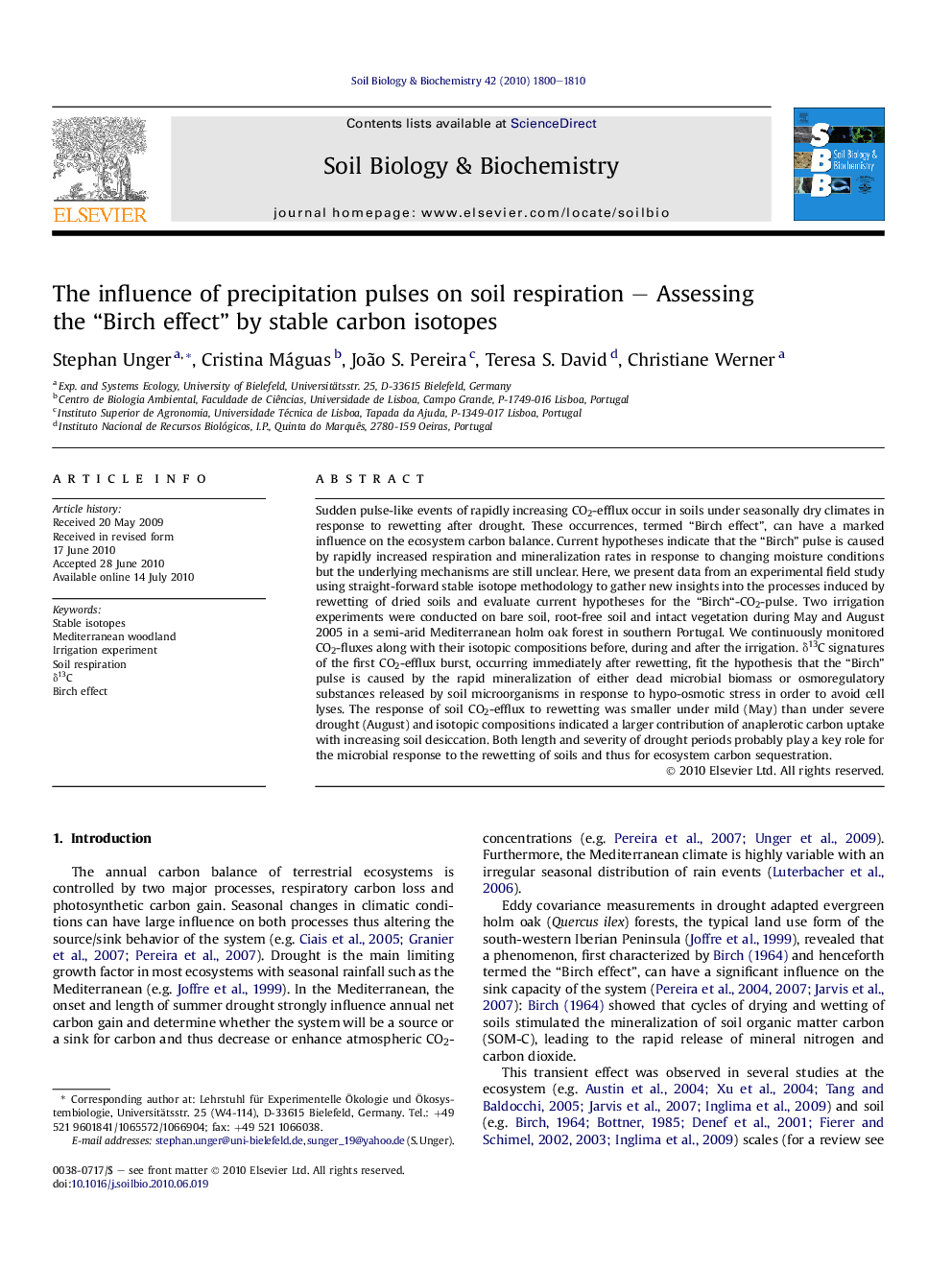| Article ID | Journal | Published Year | Pages | File Type |
|---|---|---|---|---|
| 2025416 | Soil Biology and Biochemistry | 2010 | 11 Pages |
Sudden pulse-like events of rapidly increasing CO2-efflux occur in soils under seasonally dry climates in response to rewetting after drought. These occurrences, termed “Birch effect”, can have a marked influence on the ecosystem carbon balance. Current hypotheses indicate that the “Birch” pulse is caused by rapidly increased respiration and mineralization rates in response to changing moisture conditions but the underlying mechanisms are still unclear. Here, we present data from an experimental field study using straight-forward stable isotope methodology to gather new insights into the processes induced by rewetting of dried soils and evaluate current hypotheses for the “Birch“-CO2-pulse. Two irrigation experiments were conducted on bare soil, root-free soil and intact vegetation during May and August 2005 in a semi-arid Mediterranean holm oak forest in southern Portugal. We continuously monitored CO2-fluxes along with their isotopic compositions before, during and after the irrigation. δ13C signatures of the first CO2-efflux burst, occurring immediately after rewetting, fit the hypothesis that the “Birch” pulse is caused by the rapid mineralization of either dead microbial biomass or osmoregulatory substances released by soil microorganisms in response to hypo-osmotic stress in order to avoid cell lyses. The response of soil CO2-efflux to rewetting was smaller under mild (May) than under severe drought (August) and isotopic compositions indicated a larger contribution of anaplerotic carbon uptake with increasing soil desiccation. Both length and severity of drought periods probably play a key role for the microbial response to the rewetting of soils and thus for ecosystem carbon sequestration.
